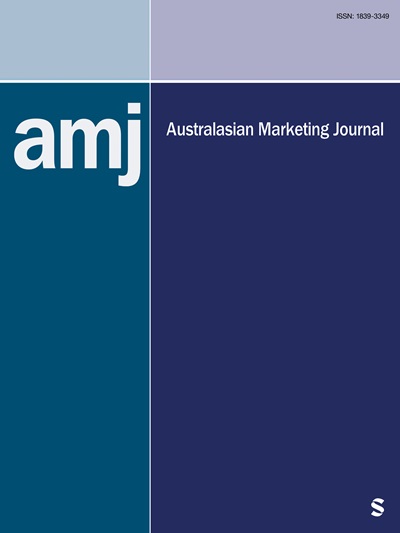Forecasting Advertisement Effectiveness: Neuroscience and Data Envelopment Analysis
IF 4
Q2 BUSINESS
引用次数: 10
Abstract
This research used a novel method in which biometric data and data envelopment analysis (DEA) (a statistical tool generally used for multi-criteria decision making) were used to assess advertising effectiveness. Facial detection and eye-tracking analyses were used to measure participants’ reactions to 14 real estate advertisements. Each of the 14 advertisements had been suggested to a real estate company by a creative advertisement company for a real upcoming advertising campaign in Modern Living for Males and Females. A total of 20 females and males, each of whom wanted to purchase a property, participated in this study. The real estate company was not sure which advertisement to select or which advertisement would be more effective in relation to the male and female target markets. The eye-tracking analysis provided useful information in relation to advertisement design efficiency and cue saliency, which can also affect participants’ emotional responses. DEA was employed to process attention, engagement, and joy provoked by the advertisements. The advertising materials were then benchmarked for each gender using the R studio and R Core Team and a robust DEA for the R (rDEA) package. Furthermore, we used an output-oriented model and variable returns-to-scale to identify the advertisement which maximized the positive emotional responses of each gender, revealing significant differences between males and females in relation to ad effectiveness.广告效果预测:神经科学与数据包络分析
本研究使用了一种新方法,使用生物特征数据和数据包络分析(DEA)(一种通常用于多标准决策的统计工具)来评估广告效果。面部检测和眼动追踪分析用于测量参与者对14个房地产广告的反应。14个广告中的每一个都是由一家创意广告公司向一家房地产公司推荐的,用于即将在《现代男女生活》中进行的真正的广告活动。共有20名女性和男性参与了这项研究,他们每个人都想购买一处房产。这家房地产公司不确定该选择哪一个广告,也不确定哪一个对男性和女性目标市场更有效。眼动追踪分析提供了与广告设计效率和线索显著性有关的有用信息,这也会影响参与者的情绪反应。DEA被用来处理广告引起的关注、参与和喜悦。然后,使用R工作室和R核心团队以及针对R(rDEA)包的强大DEA,对每个性别的广告材料进行基准测试。此外,我们使用了一个以产出为导向的模型和可变规模回报率来识别广告,该广告最大限度地提高了每个性别的积极情绪反应,揭示了男性和女性在广告有效性方面的显著差异。
本文章由计算机程序翻译,如有差异,请以英文原文为准。
求助全文
约1分钟内获得全文
求助全文
来源期刊

Australasian Marketing Journal
BUSINESS-
CiteScore
14.90
自引率
16.70%
发文量
25
期刊介绍:
The Australasian Marketing Journal (AMJ) is the official journal of the Australian and New Zealand Marketing Academy (ANZMAC). It is an academic journal for the dissemination of leading studies in marketing, for researchers, students, educators, scholars, and practitioners. The objective of the AMJ is to publish articles that enrich and contribute to the advancement of the discipline and the practice of marketing. Therefore, manuscripts accepted for publication will be theoretically sound, offer significant research findings and insights, and suggest meaningful implications and recommendations. Articles reporting original empirical research should include defensible methodology and findings consistent with rigorous academic standards.
 求助内容:
求助内容: 应助结果提醒方式:
应助结果提醒方式:


